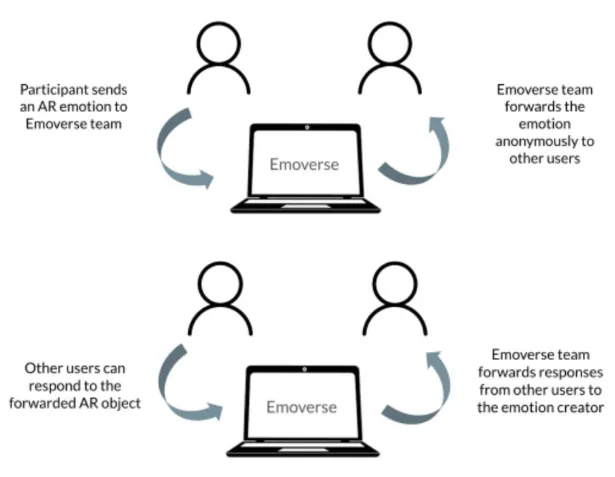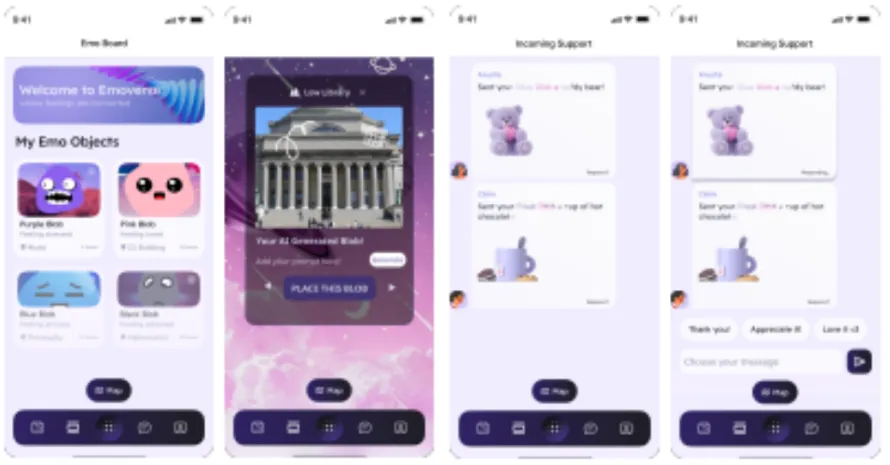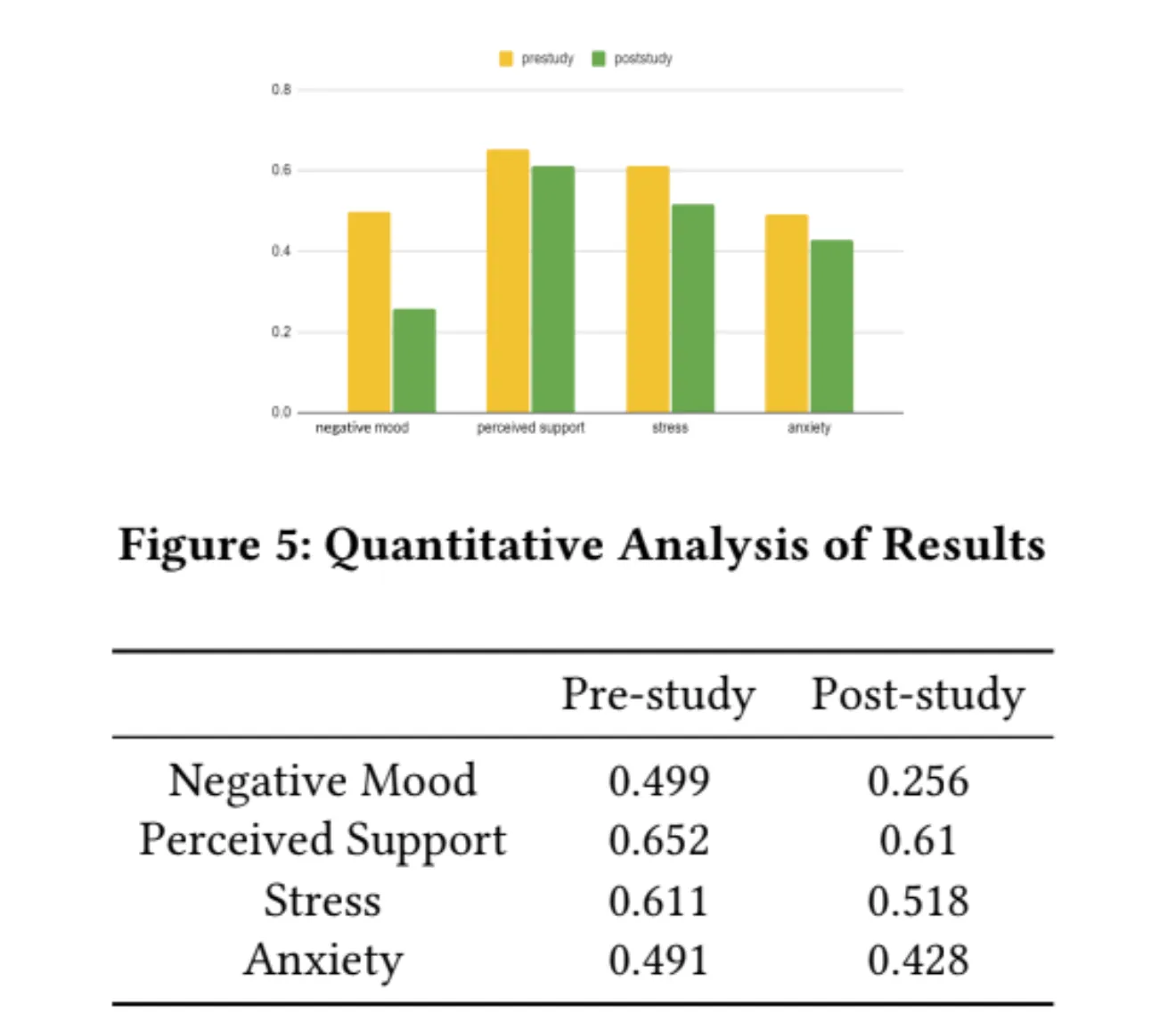Table of Contents
Overview
Emoverse is an Augmented Reality (AR) platform built to promote emotional well-being, especially among university students navigating academic stress and personal challenges. The platform encourages users to externalize their emotions through AR objects, which are shared in a collaborative virtual environment.
These objects, paired with descriptive text, form the basis for asynchronous and empathetic interaction. Other users can respond to emotional expressions by interacting with AR elements such as poking, patting, or replying fostering community-driven support without the pressure of real-time conversation.
Tech Stack
- Platform: Augmented Reality (AR) using tools like Luma
- Prototype Design: Figma
- Backend & Testing: Email-based Wizard-of-Oz setup for simulation
The system was prototyped using Figma to design the interface and user journey, while AR experiences were conceptualized using Luma. Early-stage interactions were tested via a Wizard-of-Oz setup, where backend logic was simulated through email-based user responses to validate core design hypotheses before full implementation.
Key Features
Emoverse allows users to create symbolic AR objects representing emotional states. These are not just static visuals they come paired with personal reflections, enabling contextual understanding and richer emotional communication.
Users engage in a virtual emotional space, where they can interact with shared AR content by touching, poking, or patting translating physical gestures into virtual empathy. Over time, these interactions evolve into support threads, capturing a journey of shared emotional experiences.
The system is intentionally asynchronous, which provides users with the flexibility to engage on their own terms, promoting deeper, more thoughtful interactions that aren’t limited by time or presence.

Project Highlights
A key success of the project was its user-centered design, validated through user studies that showed measurable improvements in mood and emotional state. Participants engaged with the platform and reported reductions in anxiety and stress after emotional expression.
The prototype was iteratively refined in Figma, incorporating features like customizable AR visuals, descriptive text prompts, and a fluid interface for interaction. These elements were tested and validated for usability and emotional resonance.
Emoverse also demonstrated that emotion sharing through AR, even without real-time presence, can still create meaningful community support and psychological relief.

Applications
The Emoverse concept can be extended across several domains. In mental health support, it facilitates non-intrusive emotional reflection and peer validation which are critical for student well-being.
In therapeutic settings, it provides a lightweight, expressive tool that can supplement counseling and mindfulness practices. Additionally, it supports community building in both academic and broader social contexts, offering a platform for empathy-driven interactions in digital space.
Impact
User studies revealed strong quantitative outcomes, including a 50% reduction in negative moods and a 12% drop in anxiety within 24 hours of using Emoverse. These outcomes demonstrate the tangible impact of emotional externalization through interactive AR.
Users described the experience as “heartwarming,” highlighting the importance of pairing emotional visuals with written context. Feedback underscored how even asynchronous interactions created a sense of human connection and comfort.

Future Scope
Future development will explore real-time interaction capabilities, such as direct chat and feedback for more immediate emotional support. There’s also potential for customizable AR emotion objects, allowing users greater expressive control.
In addition, Emoverse could be expanded through larger-scale user studies in therapeutic, academic, and social settings to evaluate its use in long-term emotional well-being and mental health strategies.
